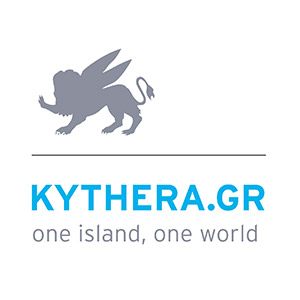This particular church consists of a cluster of four temples, a unique form of complex (only in Naxos is there a similar case) that makes it one of the island’s major attractions. The orientation is correct only for the southern and the northeast churches, while the two others are facing north. The south and west parts have two niches in the sanctuary and are both Kytherian type single-rooms with a dome while the other two, the north and northeast are single-room vaulted.
In detail, the largest and oldest southern church gave the name of Agios Dimitrios to the complex. It is a domed single-room Kytherian type, based on 4 Kytherian semi-domes and has a Byzantine iconostasis built in. Its dimensions are 6.70 x 3.10 m. It was built in the 13th century and has three layers of frescoes from the 13th and 14th century, depicting hierarchs, martyrs, scenes from the Annunciation, the Ascension and the Transfiguration, the Forty Saints, Saint Theodoros, Saint Dimitrios on horseback, the Nativity in the arch of the nave, the Crucifixion and the Visitation. The north temple is probably of Panaghia (The Madonna), a single-room with barrel-vaulted arch from the 13th century. It has two layers of Byzantine frescoes and two post-Byzantine depictions of hierarchs, prophets, the Annunciation, the presentation of Virgin Mary, the Virgin enthroned, Christ and other archpriests. The northern church is Agios Nikolaos, a single room with barrel-vaulted arch from the 13th century. Its inscription refers to a painter and deacon named Dimitrios from Monemvasia, but the chronology has worn off. Behind the altar is the image of Saint Nikolaos and below are four full length prelates. Above the altar was an enormous prayer with Christ blessing and holding an open book, which has been unfortunately destroyed by a window construction in later years. In the main church you’ll see the images of Saint Nikolaos enthroned and Saint Theodoros marshal on horseback. The northwest church of Agios Vasilios is a domed single-room Kytherian type built in the late 13th century, with 2 niches in the sanctuary. It has the Assumption of the God-bearer in the vault of the nave, Saint John the Baptist and Saint Andrew on the wall south to the sanctuary. The only entrance is on the west, so the 4 churches communicate successively. The church is located on a dirt road to Agia Elessa.

